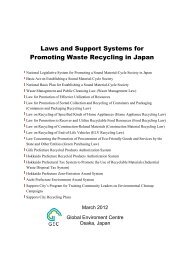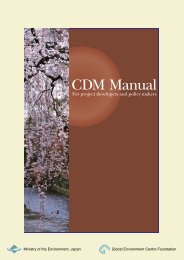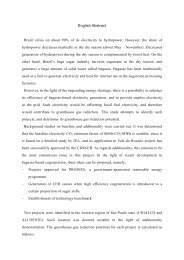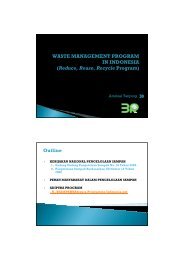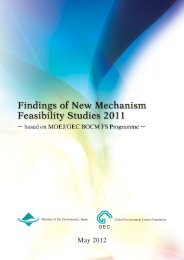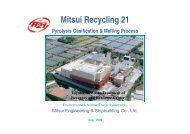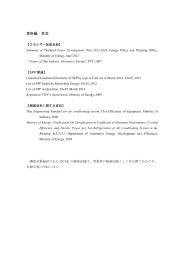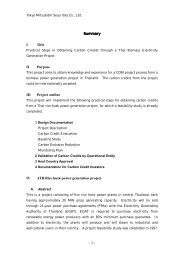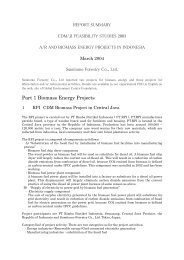PDF File - GEC
PDF File - GEC
PDF File - GEC
Create successful ePaper yourself
Turn your PDF publications into a flip-book with our unique Google optimized e-Paper software.
so that a reader can reproduce the analysis and obtain the same results. Refer to all critical technoeconomic<br />
parameters and assumptions (such as capital costs, fuel prices, lifetimes, and discount rate<br />
or cost of capital).<br />
Step 3: Barrier analysis<br />
Project participants should determine whether the proposed project activity faces barriers that:<br />
(a) Prevent the implementation of this type of proposed project activity; and<br />
(b) Do not prevent the implementation of at least one of the alternatives.<br />
(1) Sub-step 3a: Identify barriers:<br />
Project participants should identify that there are realistic and credible barriers that would prevent<br />
the implementation of the proposed project activity from being carried out if the project activity was<br />
not registered as a CDM activity.<br />
Such barriers include:<br />
(a) Investment barriers, other than the economic/financial barriers in Step 2 above, inter alia:<br />
• Similar activities have only been implemented with grants or other non-commercial finance<br />
terms. Similar activities are defined as activities that rely on a broadly similar technology<br />
or practices, are of a similar scale, take place in a comparable environment with respect to<br />
regulatory framework and are undertaken in the relevant country/region;<br />
• No private capital is available from domestic or international capital markets due to real or<br />
perceived risks associated with investment in the country where the proposed CDM project<br />
activity is to be implemented, as demonstrated by the credit rating of the country or other<br />
country investments reports of reputed origin.<br />
(b) Technological barriers, inter alia:<br />
• Skilled and/or properly trained labour to operate and maintain the technology is not<br />
available in the relevant country/region, which leeds to an unacceptably high risk of<br />
equipment disrepair and malfunctioning on other performance;<br />
• Lack of infrastructure for implementation and logistics for maintenance of the technology;<br />
• Risk of technology failure;<br />
• The particular technology used in the proposed project activity is not available in the<br />
relevant region.<br />
(c) Barriers due to prevailing practice, inter alia:<br />
• The project activity is the “first of its kind”.<br />
(d) Other barriers, preferably specified in the underlying methodology as examples.<br />
(2) Sub-step 3b: Show that the identified barriers would not prevent the implementation of at least<br />
one of the alternatives (except the proposed project activity):<br />
(a) The projects participants should demonstrate that the identified barriers do not prevent the<br />
implementation of at least one of the alternatives. Any alternative that would be prevented by<br />
the barriers identified in Sub-step 3a is not a viable alternative, and shall be eliminated from<br />
consideration.<br />
Project participants are to provide transparent and documented evidence, and offer conservative<br />
interpretations of this documented evidence, as to how it demonstrates the existence and<br />
significance of the identified barriers and whether alternatives are prevented by these barriers.<br />
Anecdotal evidence can be included, but alone is not sufficient proof of barriers. If both Sub-steps<br />
3a – 3b are satisfied, projects participants are to proceed to Step 4 (Common practice analysis). But if<br />
one of the Sub-steps 3a – 3b is not satisfied, the project activity is not additional.<br />
111




